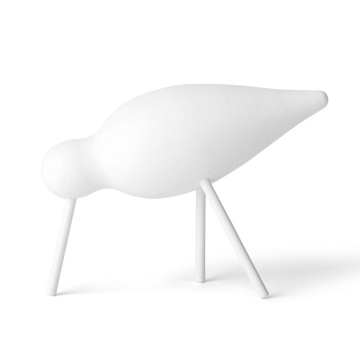From Batter to Bliss: Discovering Japan’s Tempura Magic
The Origins of Tempura: A Culinary Journey
Tempura, a beloved dish in Japanese cuisine, has a rich history that can be traced back to the 16th century. Its origins lie in the introduction of deep-fried cooking techniques by Portuguese missionaries and traders who arrived in Japan during this period. These early interactions between Japanese and European cultures facilitated the exchange of culinary practices, leading to the adaptation of tempura into local gastronomy.
Initially, the preparation of tempura involved coating fish and vegetables in a batter made from flour and water before frying them in oil. Over time, this simple method evolved as Japanese cooks began incorporating local ingredients, which enhanced the flavor and texture of the dish. The use of seasonal produce allowed tempura to reflect the diversity of Japan's agriculture, making it a versatile culinary option.
As tempura gained popularity, various regions of Japan developed their own unique styles and specialties. For instance, in the Edo period (1603-1868), tempura restaurants flourished in Tokyo, often serving it as a quick, affordable meal for the bustling population. Regional variations emerged, incorporating local seafood and vegetables, showcasing the adaptability of tempura to different ingredients. In contrast, the Kansai region favored a lighter batter, resulting in a distinct difference in taste and appearance.
In modern times, tempura continues to hold an esteemed place in Japanese cuisine. Chefs have perfected the art of tempura, exploring innovative techniques and ingredient combinations, while still honoring its historical roots. This culinary evolution demonstrates the enduring appeal of tempura, making it a staple in both traditional and contemporary Japanese dining experiences. By understanding its origins, we can appreciate the craftsmanship and history intertwined in every bite of this delightful dish.
The Art of Tempura: Techniques and Ingredients
Tempura is a revered culinary tradition in Japan, characterized by its light, crispy batter and vibrant ingredients. Achieving the perfect tempura requires a deep understanding of both the techniques involved and the selection of high-quality ingredients. At the heart of tempura lies the batter, which is paramount in determining the dish's overall texture and flavor. The most commonly used flour for tempura batter is a low-gluten variety, such as cake flour or a special tempura flour blend. This allows for a delicate coating that fries to a light golden brown, creating a textural contrast with the filling ingredients.
Temperature plays a significant role in preparing the batter, with cold water often added right before frying to maintain a chilled environment. This ensures that the batter does not overmix, preserving its lightness. Keeping the oil at an optimal frying temperature—usually around 160 to 180 degrees Celsius (320 to 356 degrees Fahrenheit)—is critical to achieving the desired crispy exterior without absorbing excessive oil. Any fluctuations in temperature could result in soggy or burnt tempura, highlighting the necessity of precise technique in this art form.
The selection of ingredients is equally crucial in crafting an exceptional tempura. Seasonal vegetables and fresh seafood are preferred, as they not only enhance flavor but also contribute to a visually appealing dish. Common vegetable choices include sweet potatoes, zucchini, and green beans, each offering unique textures and tastes. For seafood, tender shrimp and fish are favored not only for their compatibility with the batter but also for the vibrant flavors they impart. Freshness directly impacts the outcome; thus, utilizing ingredients that are in season and at their peak quality is essential to achieving tempura’s signature delight. Mastering these techniques and understanding ingredient sourcing elevate tempura from a mere dish to a culinary experience, showcasing Japan’s gastronomical artistry.
Tempura in Japanese Culture: More Than Just Food
Tempura holds a unique place in Japanese culture, transcending its status as a mere culinary item to embody a rich cultural tradition. Originating in the 16th century, when Portuguese missionaries introduced the technique of deep frying, tempura has evolved to become a quintessential part of Japanese gastronomy. Its preparation and consumption reflect the values, aesthetics, and social interactions inherent within Japanese society.
In Japan, tempura is enjoyed across a spectrum of dining experiences, ranging from casual eateries to elaborate kaiseki meals. In a casual setting, families often gather at izakayas, where tempura is a popular dish, allowing patrons to enjoy a relaxed dining atmosphere. Conversely, in high-end kaiseki restaurants, tempura is served as a carefully curated course, showcasing not only the skill of the chef but also seasonal ingredients, thus elevating the dish to an art form. This versatility in presentation underscores tempura’s adaptability and its deep-rooted significance in Japanese culinary practices.
Moreover, tempura plays a vital social role, especially in gatherings and celebrations. The act of sharing beautifully crafted tempura brings people together, fostering a sense of community and connection. Festivals often feature tempura stalls, where locals and visitors alike can savor this beloved dish, symbolizing joy and festivity. Its presence during special occasions, like family gatherings and seasonal celebrations, further cements its value as more than just a dish—it serves as a bridge connecting generations and communities.
On an international scale, tempura has become an ambassador of Japanese cuisine, representing the country's culinary tradition to the world. Its global appeal lies not only in its flavors and textures but also in the cultural narratives surrounding it. As tempura continues to evolve, it remains a vibrant symbol of Japan’s rich culinary heritage, celebrated both at home and abroad.
How to Experience Tempura: Best Restaurants and Tips
Experiencing authentic tempura in Japan is a culinary endeavor that promises to delight the senses, and knowing where to go is crucial for the best experience. Renowned restaurants specializing in tempura often incorporate both traditional and contemporary techniques, ensuring that diners enjoy a flavorful and memorable meal. One highly recommended establishment is Tempura Kondo, located in Tokyo’s upscale Ginza district. With a focus on using the freshest seasonal ingredients, this restaurant is applauded for its expertly prepared tempura, offering a fine dining experience that holds a Michelin star.
Another esteemed option is Tenichi, which boasts a rich history dating back to the Edo period. With various locations throughout Japan, Tenichi remains dedicated to serving high-quality tempura in a setting that reflects traditional Japanese aesthetics. The attentive service further enhances the overall dining experience, making it a favorite among locals and tourists alike.
For those visiting Osaka, Tempura Momoya is a must-visit. Known for its casual atmosphere, this eatery provides a welcoming environment to savor crispy tempura dishes at reasonable prices. Guests can choose from a range of ingredients, from shrimp to seasonal vegetables, prepared with care and precision.
When enjoying tempura, selecting the appropriate dipping sauce is essential. The classic pairing is tentsuyu, a blend of dashi broth, soy sauce, and mirin. Accompanying side dishes such as rice, pickles, or a refreshing salad complement the meal beautifully. Observing the etiquette around tempura can also enhance the experience; for instance, savoring each piece without rushing allows one to appreciate the dish's delicate flavors and textures. As diners immerse themselves in this delightful experience, paying attention to the restaurant’s ambiance and service heightens the enjoyment of this cherished Japanese cuisine.





